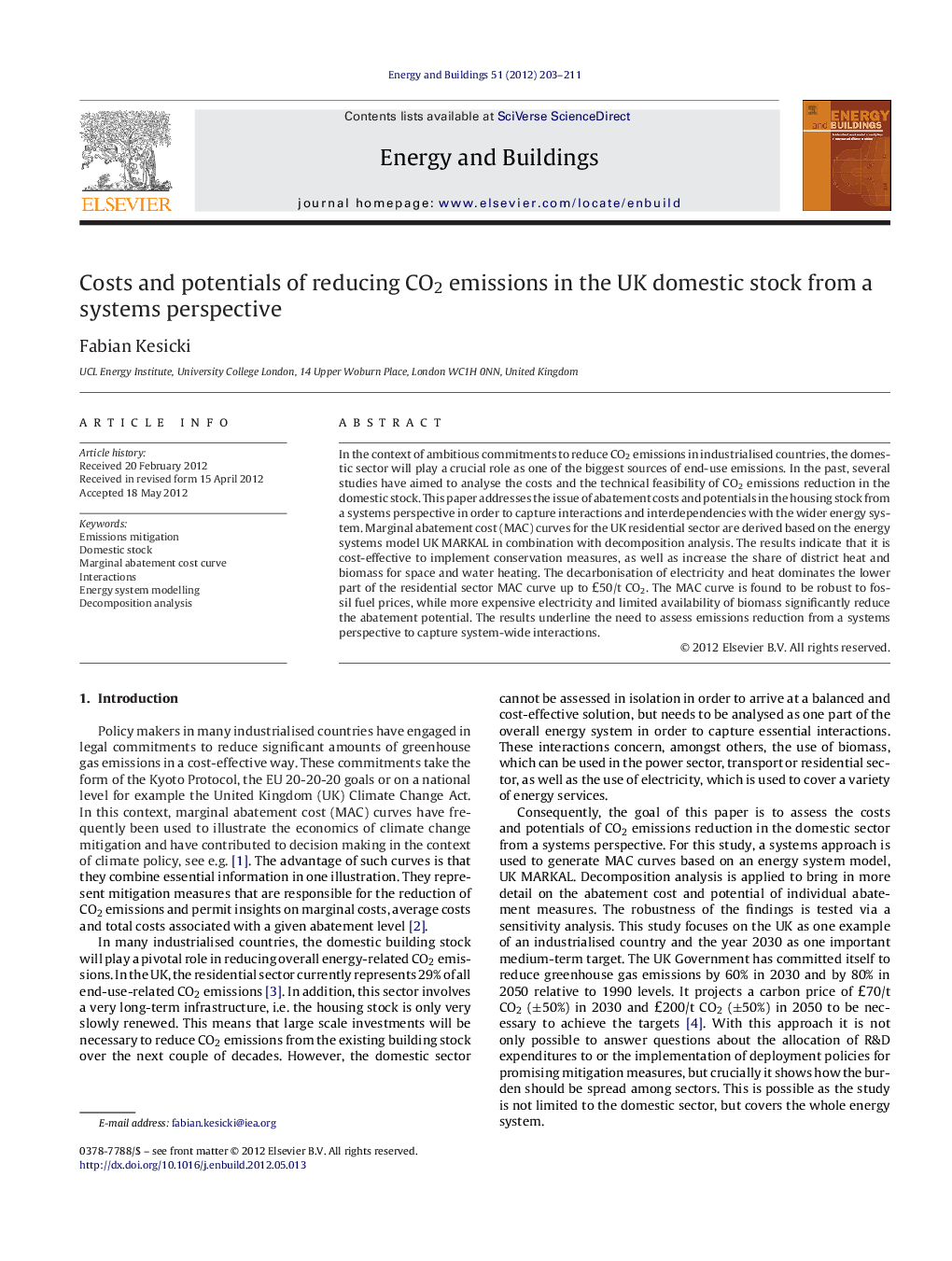| Article ID | Journal | Published Year | Pages | File Type |
|---|---|---|---|---|
| 263619 | Energy and Buildings | 2012 | 9 Pages |
In the context of ambitious commitments to reduce CO2 emissions in industrialised countries, the domestic sector will play a crucial role as one of the biggest sources of end-use emissions. In the past, several studies have aimed to analyse the costs and the technical feasibility of CO2 emissions reduction in the domestic stock. This paper addresses the issue of abatement costs and potentials in the housing stock from a systems perspective in order to capture interactions and interdependencies with the wider energy system. Marginal abatement cost (MAC) curves for the UK residential sector are derived based on the energy systems model UK MARKAL in combination with decomposition analysis. The results indicate that it is cost-effective to implement conservation measures, as well as increase the share of district heat and biomass for space and water heating. The decarbonisation of electricity and heat dominates the lower part of the residential sector MAC curve up to £50/t CO2. The MAC curve is found to be robust to fossil fuel prices, while more expensive electricity and limited availability of biomass significantly reduce the abatement potential. The results underline the need to assess emissions reduction from a systems perspective to capture system-wide interactions.
► The CO2 abatement potential and cost in the UK domestic stock are modelled. ► A systems perspective is chosen to capture interactions in the energy sector. ► Significant interactions are found with power generation and biomass supply. ► MAC curve is robust to fossil fuel prices, but not to limited biomass potential.
